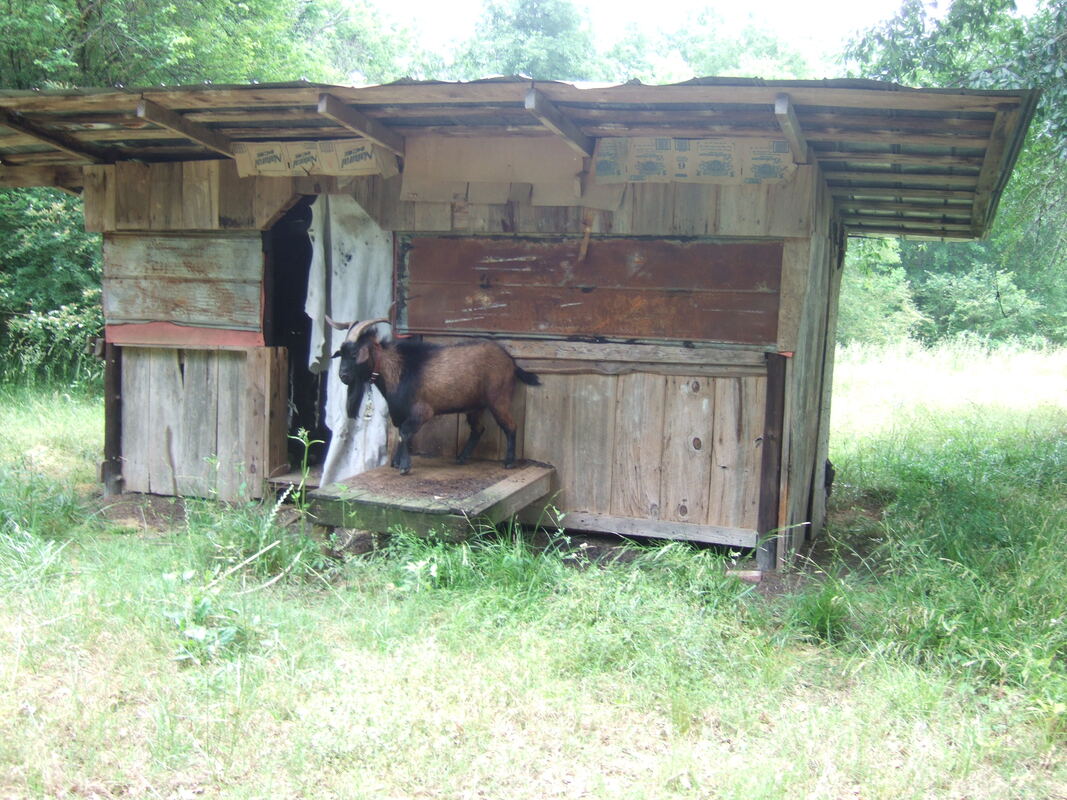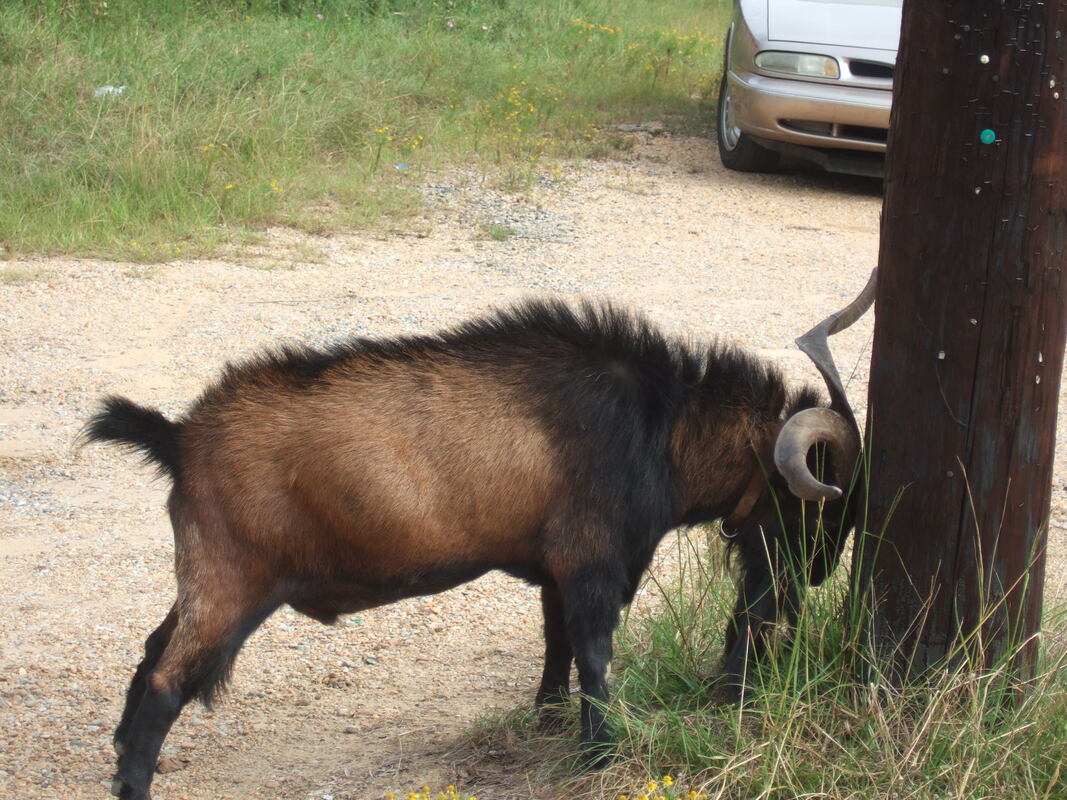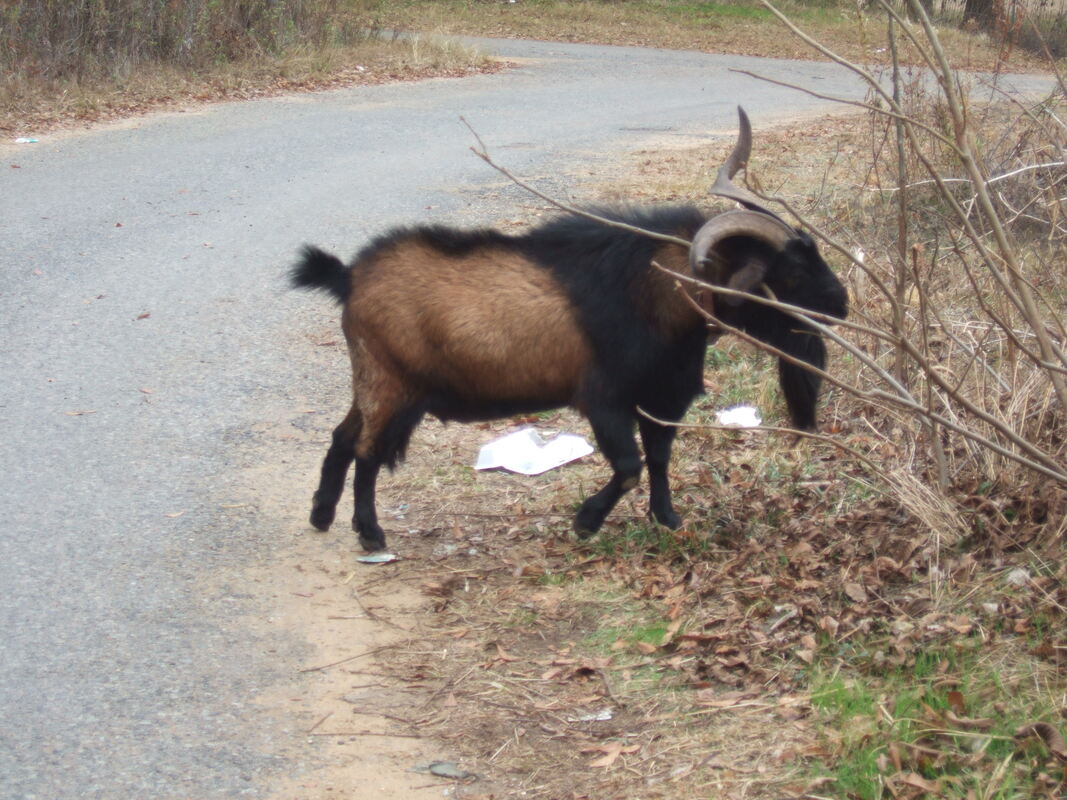| When I first became aware of Woodrow he was tethered to a shed on the south side of the old main road through Sawyerville that ran by the railroad. That was before even my time: by the time I was born the main road had moved a good city block south, where it is now. When I was a child my Cud’n Iddie lived in a 2-story house on this location along with her daughter Miss Louise. (Don’t ask why one was Cud’n and one was Miss. Answer lost in time.) |
But I digress. You’ll catch me doing that again.
Woodrow was owned by a Black couple who lived in a brick house built by M.T. Martin (one of Iddie Martin May’s sons) for his hoped-for bride my Aunt Mamie May that was immediately east of Iddie’s house. Aunt Mamie declined M.T.’s offer, and he later married Miss Bill. After M.T. died and Miss Bil moved to Greensboro, my Uncle Murray Martin bought the brick house for his family. Unclie Muray was actually a cousin (2 different lines) on the May side, but he married my mother’s middle sister, hence uncle. Anyway, the couple who ended up with the house established a baseball diamond to the east of Woodrow’s shack for the use of the neighborhood youth, and at times Woodrow would be staked out on the field to keep the grass gnawed down.
After the couple died, Woodrow remained at his house. He was attended by a young man who I believe was a grandson of the couple, who checked on him and made sure he had plenty of water. Goats need lots of water. They get some from the grass and leaves but not enough.
| Usually he’d leave the rope at home, but if it had been more securely fastened about his neck he’d simply undo the other end and drag the rope with him. Woodrow was well-liked by many other than me in Sawyerville. One farmer often dropped off corn stlks during corn season, much appreciated. Over time I noticed that often cars would stop and someone would get out and stroke Wodrow between his horms. Later I |
| I was not the only one to refer to this as the Mayor of Sawyerville, for certainly he was our most prominent citizen for several years. Here he is on November 12, 1916, leading the Sawyerville Veterans and Senior Citizens Appreciation Day Parade with his good friend Calamity. It was Calamity who told me of Woodrow’s death last October. I hadn’t seen him in a couple of years but I had been happy knowing |
I miss him. I’m glad he and I shared some time together as we overlapped in our lives in Sawyerville.
But as the poet says, “at my back I always hear Time's winged chariot hurrying near.” That chariot arrives for goats as well. When it comes for me, it would delight me if Woodrow is up front pulling.





















 RSS Feed
RSS Feed